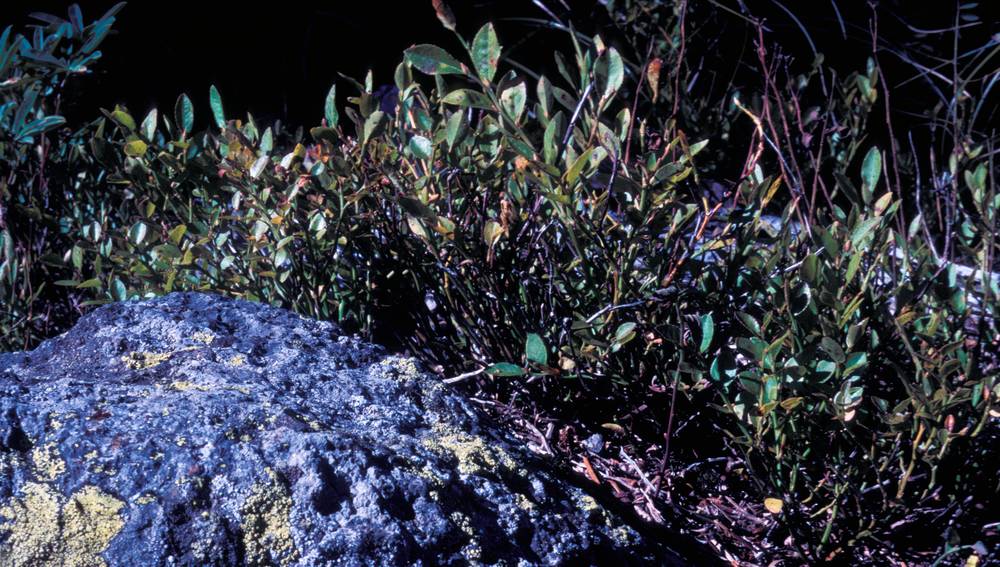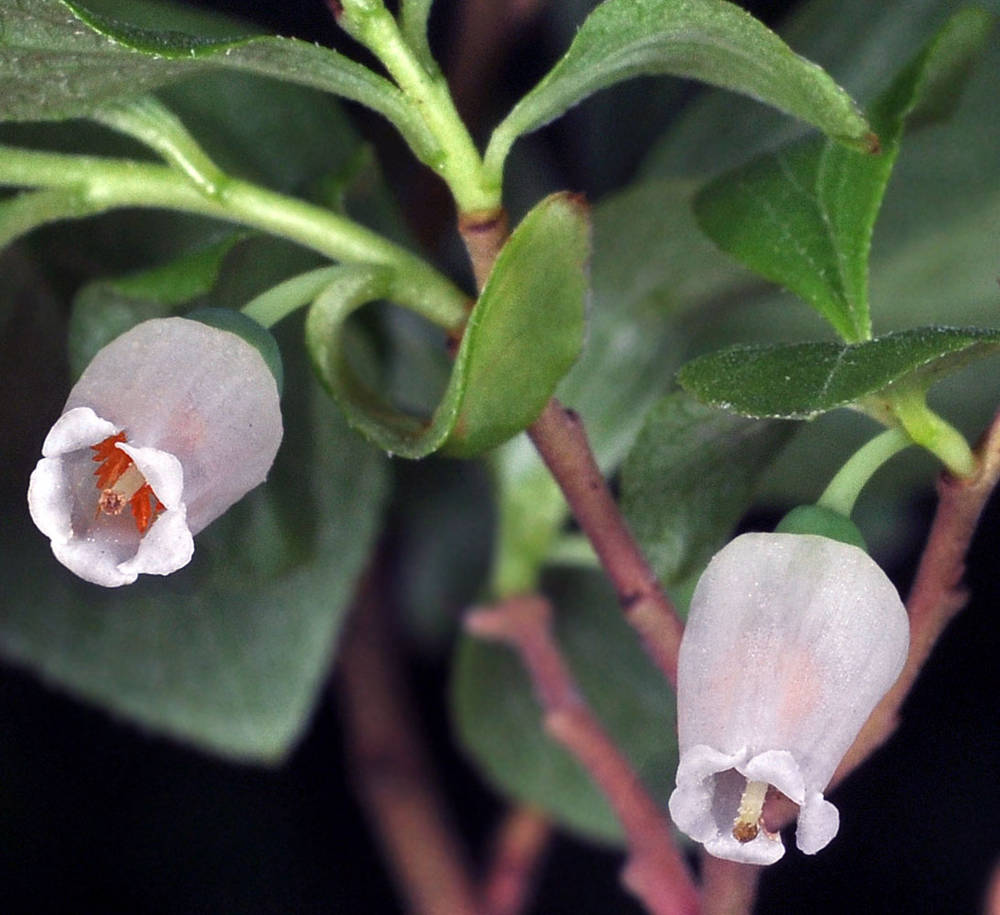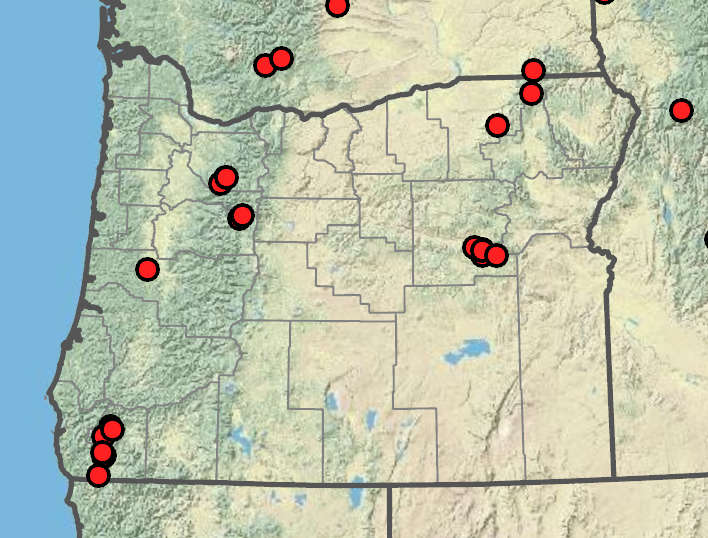Vaccinium myrtillus
Vaccinium caespitosum
whortleberry
dwarf bilberry
elliptic to ovate, 11–20(30) × 5–10 mm, light green abaxially, green adaxially; thin; flexible;
margins sharply serrate from tips to near base, prominently veined;
tips acute;
surfaces abaxially glandular, adaxially glabrous.
obovate to oblanceolate, 10–30 × 3–12 mm; thin; flexible, green abaxially;
margins serrate on distal 25–50%, prominently reticulate-veined;
tips rounded, sometimes subacute;
surfaces abaxially glabrous or glandular, adaxially glabrous.
solitary flowers in axils.
solitary flowers in axils.
sepals 5;
calyces shallowly lobed, glabrous;
petals 5;
corollas ovoid-urceolate to globose, 3–7 × 4–7 mm, white to pink, glaucous;
filaments glabrous.
sepals 5, light green;
calyx lobes vestigial;
petals 5;
corollas cylindric-urceolate to globose, 4–6 × 3–5 mm, white to pink, glaucous;
filaments > anthers, glabrous.
4–9 mm in diameter, dark red to bluish black; without a bloom.
5–8 mm in diameter, blue to bluish black, with a bloom.
=24, 48.
=24.
Vaccinium myrtillus
Vaccinium caespitosum
Wet mid- to high elevation areas. Flowering Apr–Jul. 1100–2100 m. BW, Casc, Sisk. ID, NV, WA; northeast to Alberta and southeast to NM, Greenland; Asia, Europe. Native.
Morphologically, Vaccinium myrtillus is similar to V. scoparium, and at higher elevations their ranges overlap. Vaccinium myrtillus differs from V. scoparium by its generally larger leaves and flowers, often sparsely puberulent twigs, and its broom-like habit.
Wet meadows to rocky mountain slopes. Flowering Apr–Aug. 50–2800 m. BR, BW, Casc, CR, ECas, Est, WV. CA, ID, WA; north to AK, east to Newfoundland, south to Guatemala. Native.
Morphologically, V. caespitosum is very similar to V. deliciosum, making identification of these species difficult, particularly at higher elevations where their ranges overlap. The chromosome numbers of V. caespitosum (2n=24) and V. deliciosum (2n=48) may indicate that V. deliciosum is an autopolyploid derivative of V. caespitosum.
Stephen Meyers
Stephen Meyers
- Local floras:
BC,
OR,
WA
- Local Web sites:
Flora NW,
PNW Herbaria
WildflowerSearch
iNaturalist (observations)
USDA Plants Database
- LBJ Wildflower Center
- SEINet
- Plants of the World Online
- Encyclopedia of Life
- Wikipedia
- Google Image Search
- Local floras:
BC,
CA,
OR,
WA
- Local Web sites:
CalFlora,
CalPhotos,
Flora NW,
PNW Herbaria
WildflowerSearch
iNaturalist (observations)
USDA Plants Database
- LBJ Wildflower Center
- SEINet
- Plants of the World Online
- Encyclopedia of Life
- Wikipedia
- Google Image Search





